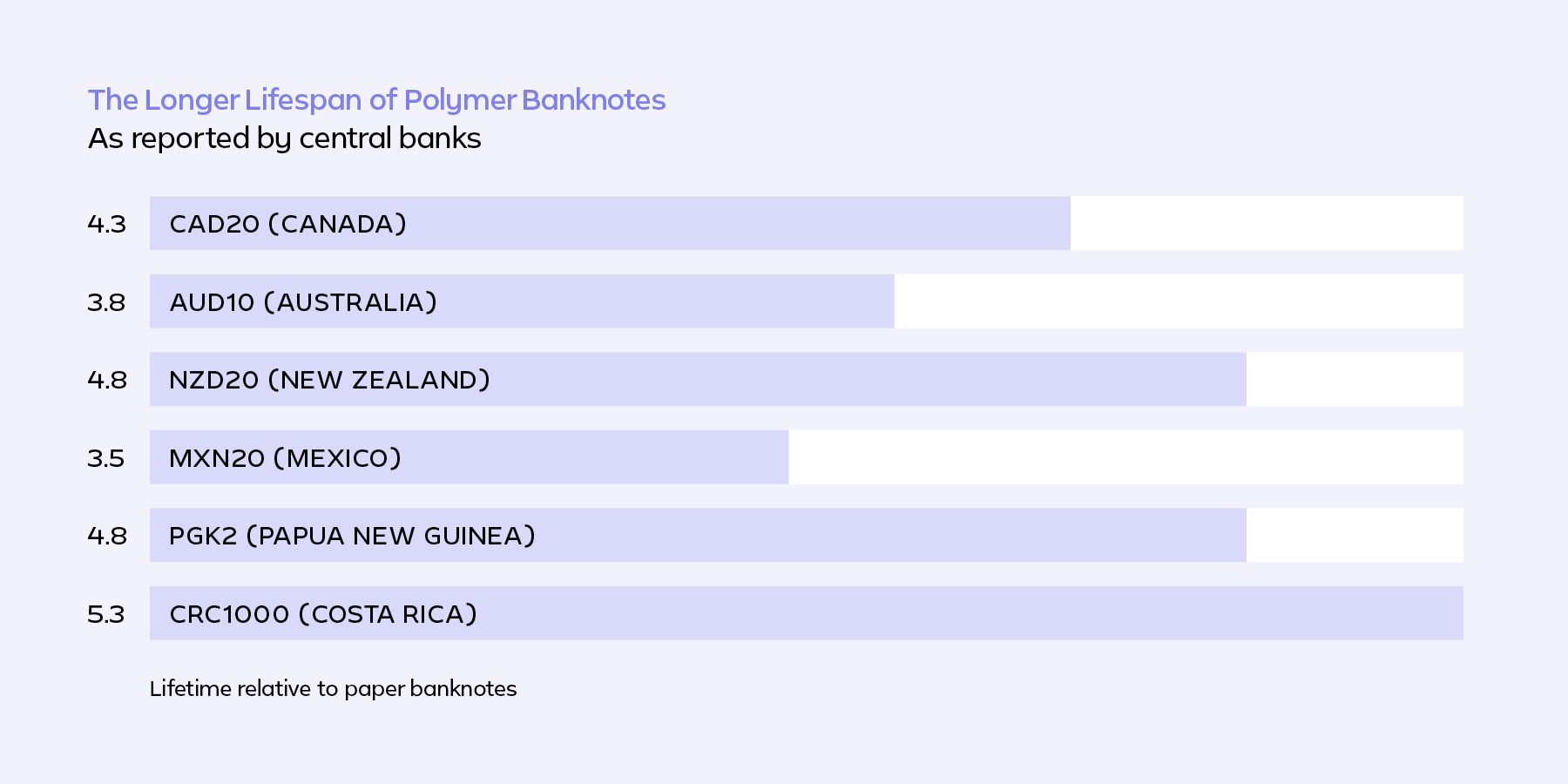Banknotes printed on GUARDIAN™ substrate are stronger, safer, cleaner and greener. This has been proven with circulation data from central banks across a wide range of cash cycles and climates worldwide.
Independent evidence demonstrates GUARDIAN substrate lasts three to five times longer in circulation, which saves central banks money, reduces counterfeit rates and improves environmental performance.

GUARDIAN™ banknotes are far more durable than cotton-paper alternatives, lasting up to six times longer in the cash cycle. This has been independently verified by a wide range of central banks.

The longer life of a GUARDIAN banknote delivers important improvements to environmental performance, cash cycle management, and seigniorage for central banks. A cost-benefit analysis by the Reserve Bank of Australia shows that switching to GUARDIAN saved almost AUD1 billion over 25 years, in inflation adjusted terms.
“The longer life of polymer banknotes is what drives their reduced ongoing cost, due to lower transport, destruction, processing, and production costs over time.”
– Reserve Bank of Australia

GUARDIAN substrate was originally developed by Australia’s national scientific organisation to combat the threat of counterfeit banknotes. Since then, CCL Secure has continued to innovate and create advanced security features that ensure GUARDIAN remains the world’s most secure substrate.
In addition to clear polymer windows, CCL Secure produces proprietary security features like CINEMA™, an industry-leading optically variable device, and specialised security inks like the VIVID™ family. The result of these innovations is that wherever GUARDIAN banknotes are introduced, counterfeit rates have been reduced.

GUARDIAN banknotes are cleaner than cotton–paper or hybrid alternatives, due to physical and chemical properties inherent to polymer. Their smooth, non-porous, surface prevents moisture absorption, which reduces the potential for pathogenic growth. This has been verified by independent researchers.
“We found that bacteria found on human hands are less capable of sticking to plastic banknotes.
“In addition, bacteria found on human hands die-off faster when on plastic banknotes.”
– Professor Frank Vriesekoop, Harper Adams University
GUARDIAN banknotes can also be sanitised by wiping them clean with a damp cloth.

Not all plastic is bad. In fact, comprehensive lifecycle analyses by central banks in England, Canada and Mexico show that switching to GUARDIAN improves environmental outcomes across most metrics in the relevant ISO standard. This is primarily due to the fact GUARDIAN banknotes last three to five times longer in circulation.
Because GUARDIAN substrate is stronger and more durable, fewer banknotes need to be produced to replace unfit notes. This reduces the use of raw materials, as well as emissions from transport.
“Polymer banknotes have a smaller carbon footprint, require lower water and energy usage for production, and cause less environmental toxicity.”
– The Bangko Sentral ng Pilipinas
The Recycling Process for GUARDIAN™ Banknotes
Unlike those printed on cotton-paper substrate, GUARDIAN banknotes can be fully recycled.
After their long life in circulation, GUARDIAN banknotes are returned to central banks where they’re securely sorted and shredded. This means they don’t get discarded or pollute the environment. Instead, GUARDIAN banknotes are converted back into polymer pellets that are then on-sold for use in durable products.
Want To Know More?
Complete the form below to contact the Guardian Team